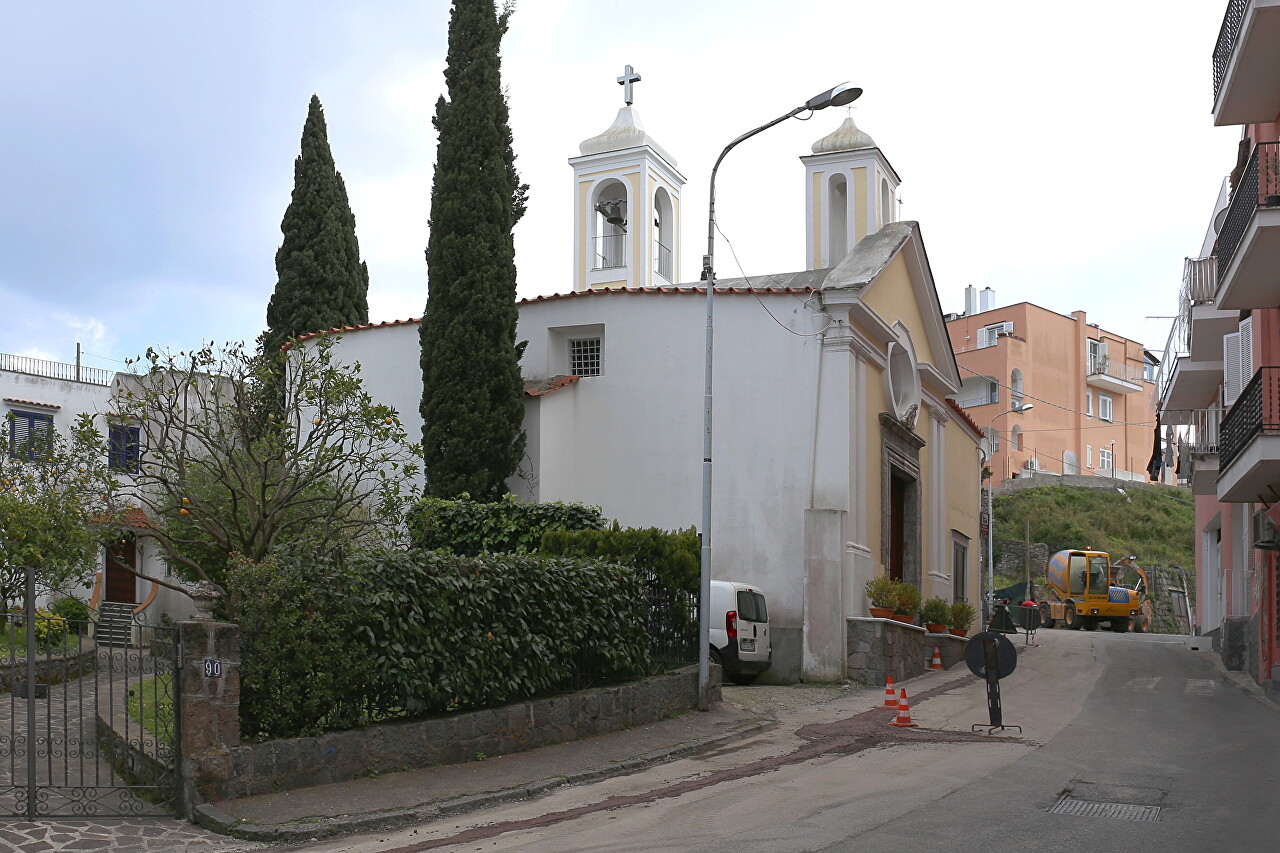First Walk in Ischia Ponte
Staying at the small and cozy hotel Del Postiglione (Postman), located on a quiet green street near the port, I went for the first acquaintance with the main city of the island. On the way from the port, I stopped by the tourist information office, where I got a map, but to get a general idea of the new place I arrived in, I went for a walk without a specific plan. I took Via Alfredo De Luca, where the hotel is located, and headed in the direction of Ischia Ponte, continuing along Via Antonio Sogliuzzo, where the surrounding buildings were completely surrounded by greenery and there was nothing to see. Finally, I came to Via Seminario, where there were multi-storey buildings. Here I noticed a side staircase with a luxurious Baroque arch. I looked in, found a dead-end courtyard, came back and walked on.
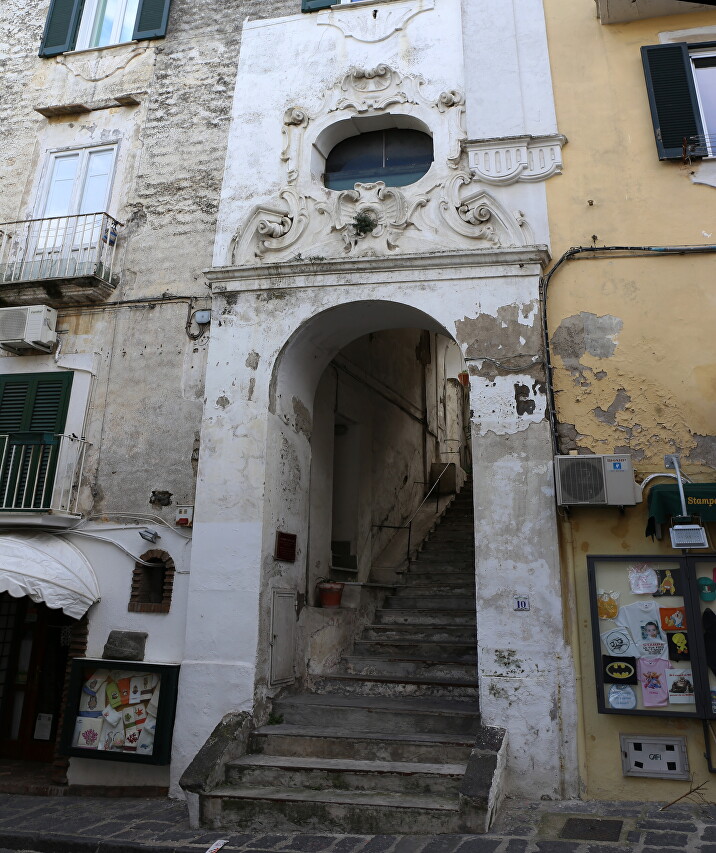
Via Seminario leads to the Aragonese Castle, but I decided to leave this main attraction for the next day, and for now just get into the spirit of the town. To do this, it is best to deviate from the routes trampled by tourists, and go deeper into ordinary residential areas. So I turned into the first street, where there were no luxury restaurants or boutiques to be seen, and the facades of the houses didn't shine spotlessly white.
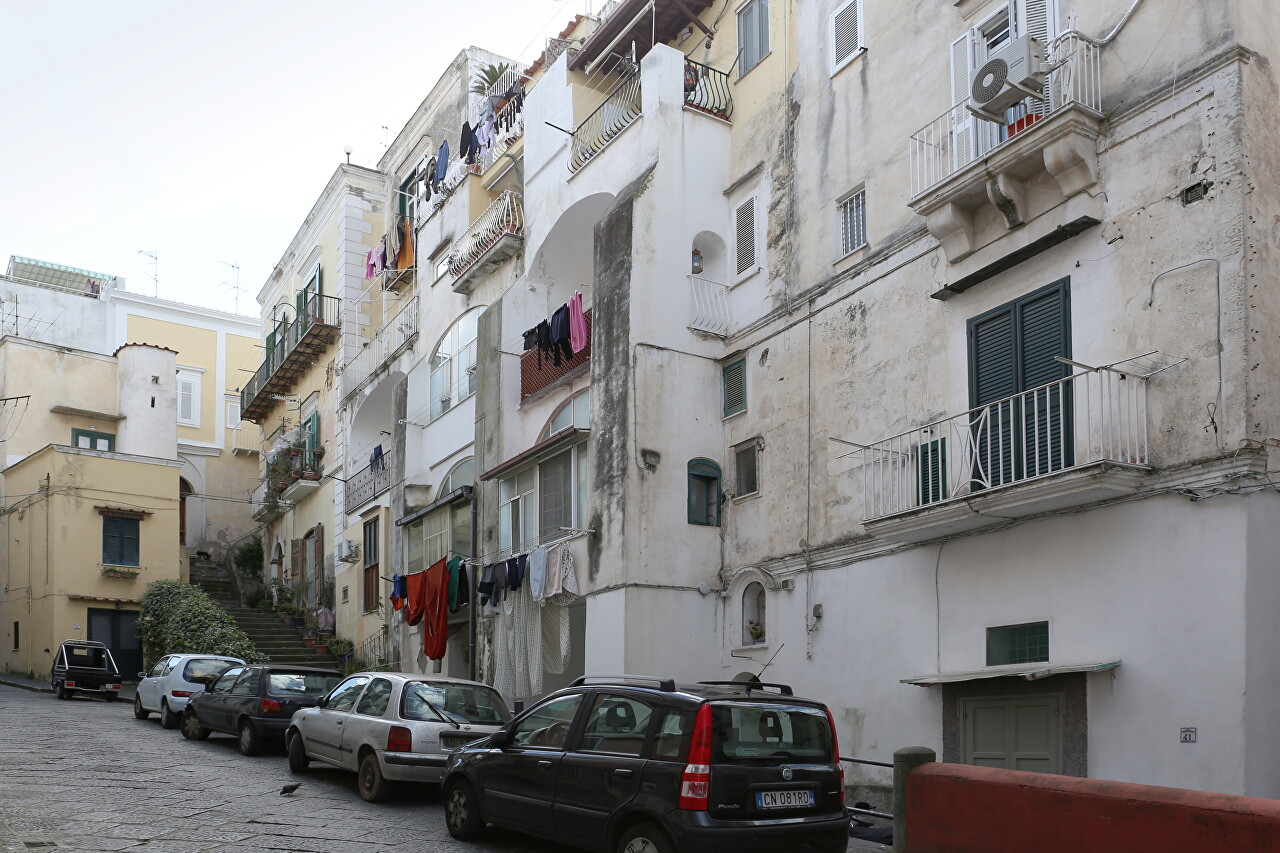
The street was called Via Gian Battista Vico and climbed a mountain. The architecture of the buildings here turned out to be very entertaining, and is a style that I came up with the name "utilitarian eclecticism". Most of the houses are very old and were rebuilt several times, each time adding one floor, and the design of the window openings of each new floor differs from the earlier one.
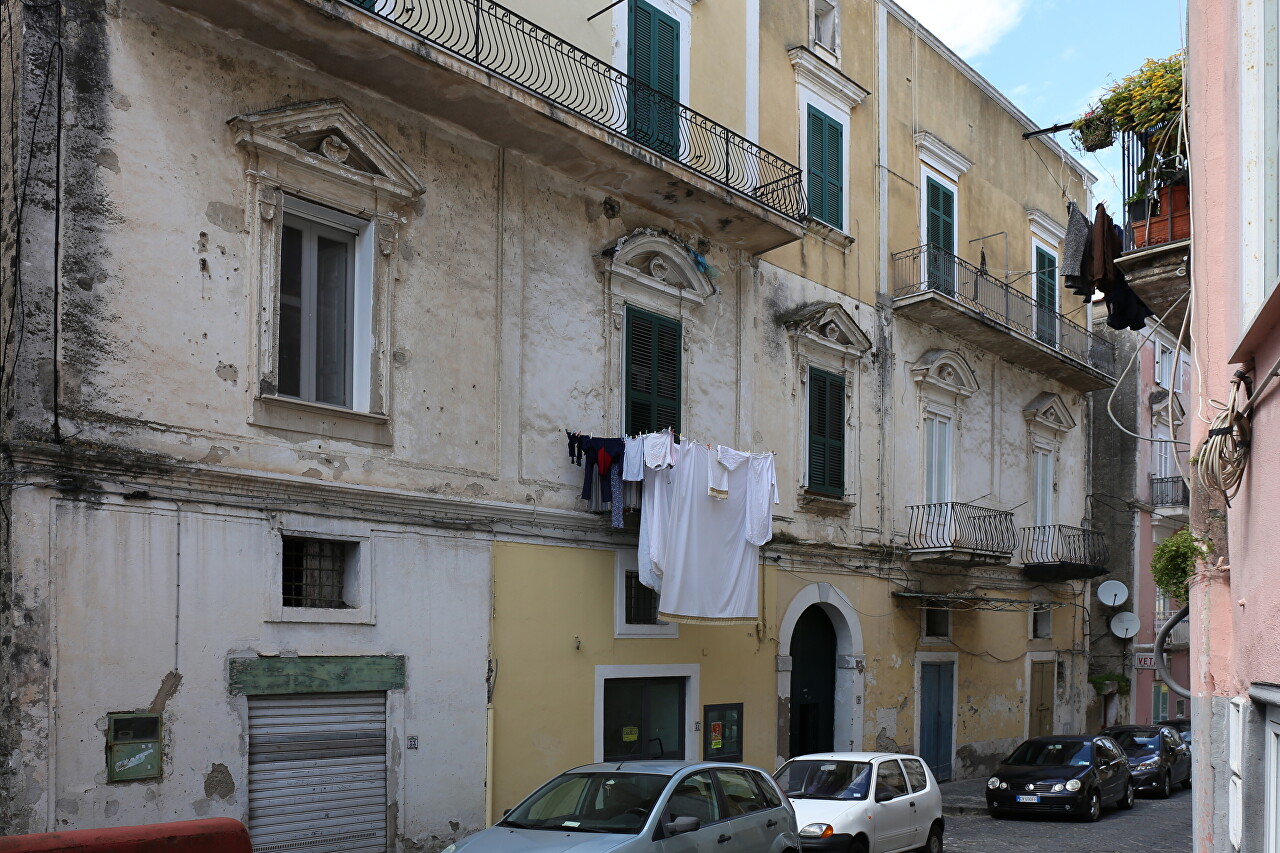
After a couple of blocks of apartment buildings, low-rise development began, also pleasing to the eye with its variety. Like, for example, this villa with an abundance of terraces and balconies. Family hotels are often located in such houses, where not one room is not similar to another, or several families live in different levels with a separate staircase and veranda.
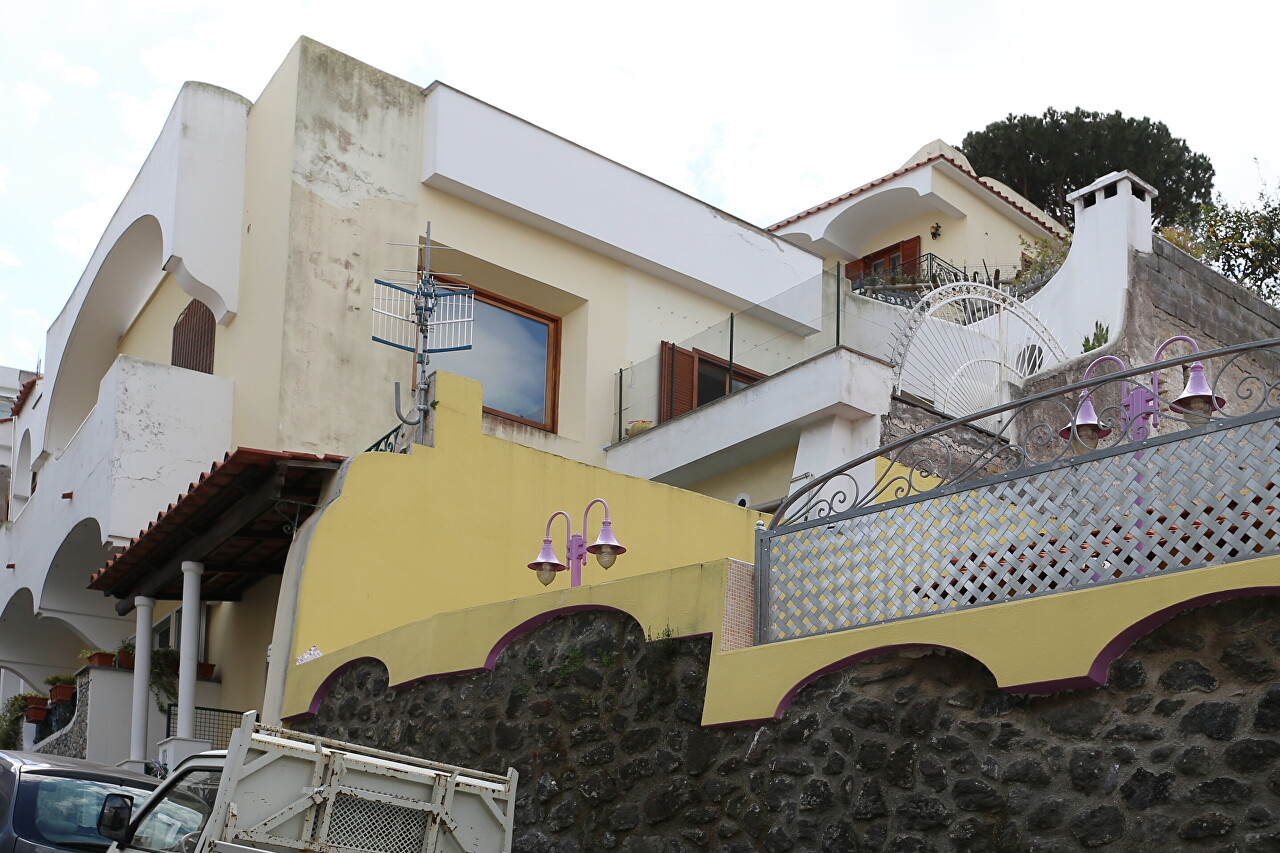
The facades of such houses are covered with beautiful facing materials, but on the side walls they do not hesitate to lay open communications and hang mismatched mailboxes.
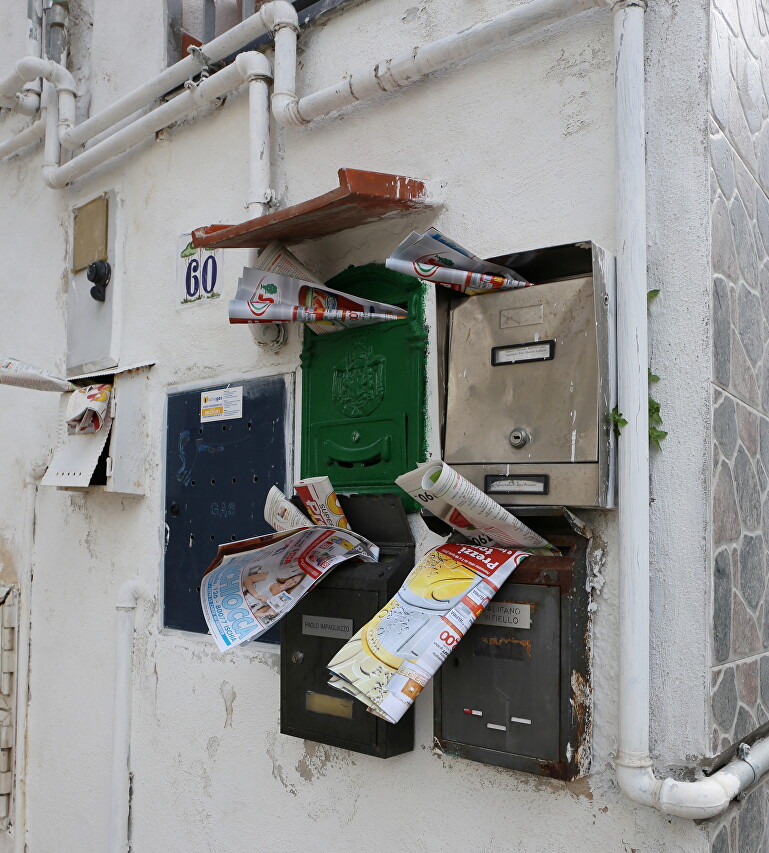
After another block to my right, I found a gloomy tunnel with an arched stone vault and a ceramic sign Via Procidano, which I quickly turned into.
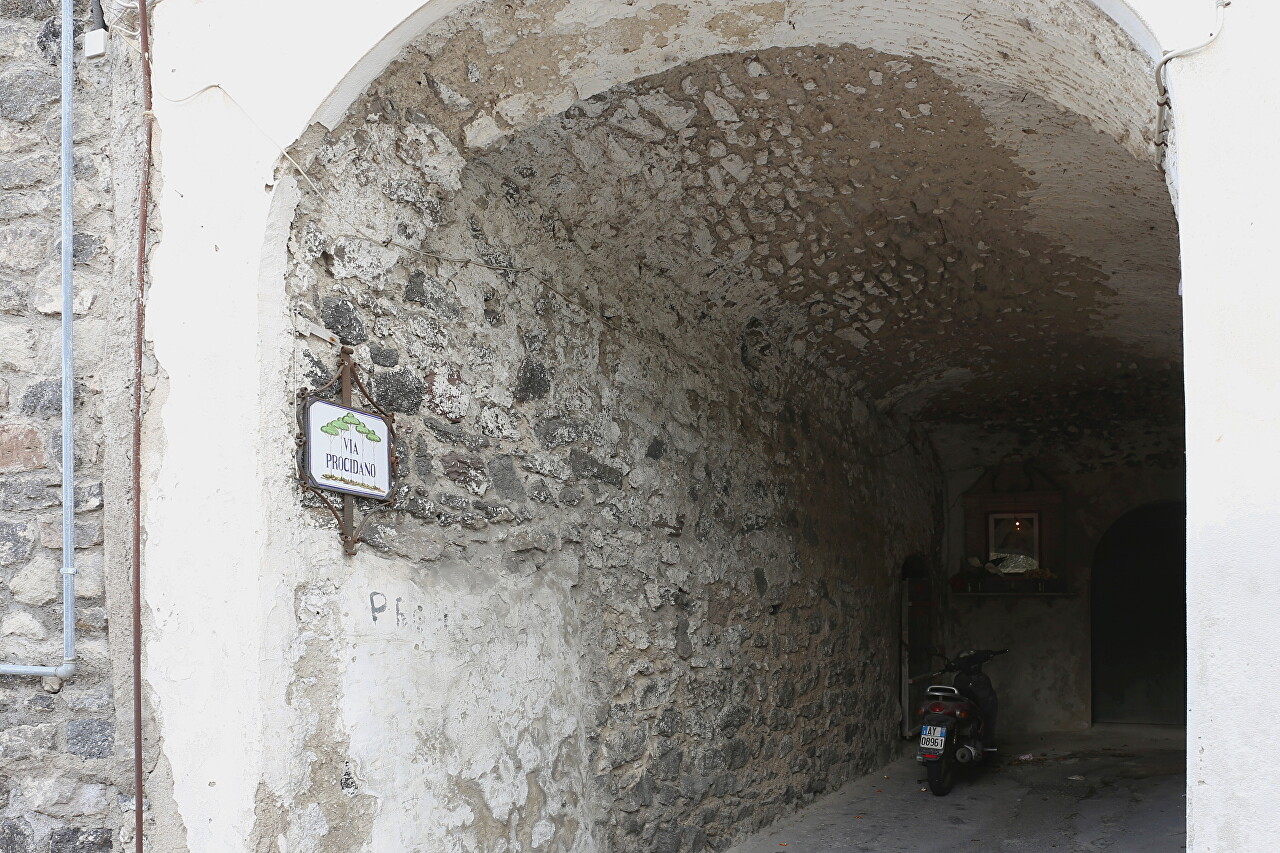
The dark tunnel took two turns and opened into a narrow street leading up the mountain.
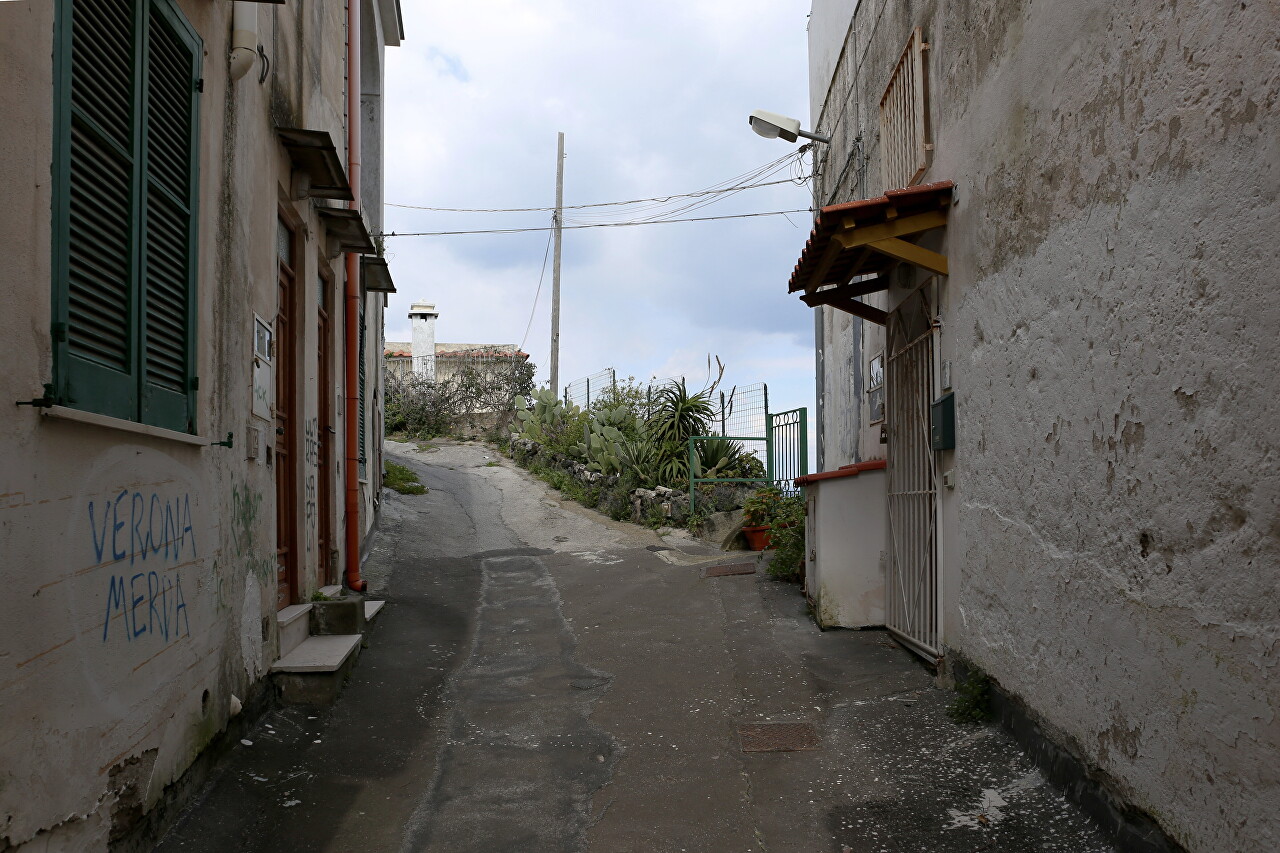
When I got out into the open, I knew I'd done the right thing, turning into a dark alley that gave me a wonderful view of the Strait between Ischia and Procida. Perhaps that's why the street has such a name.
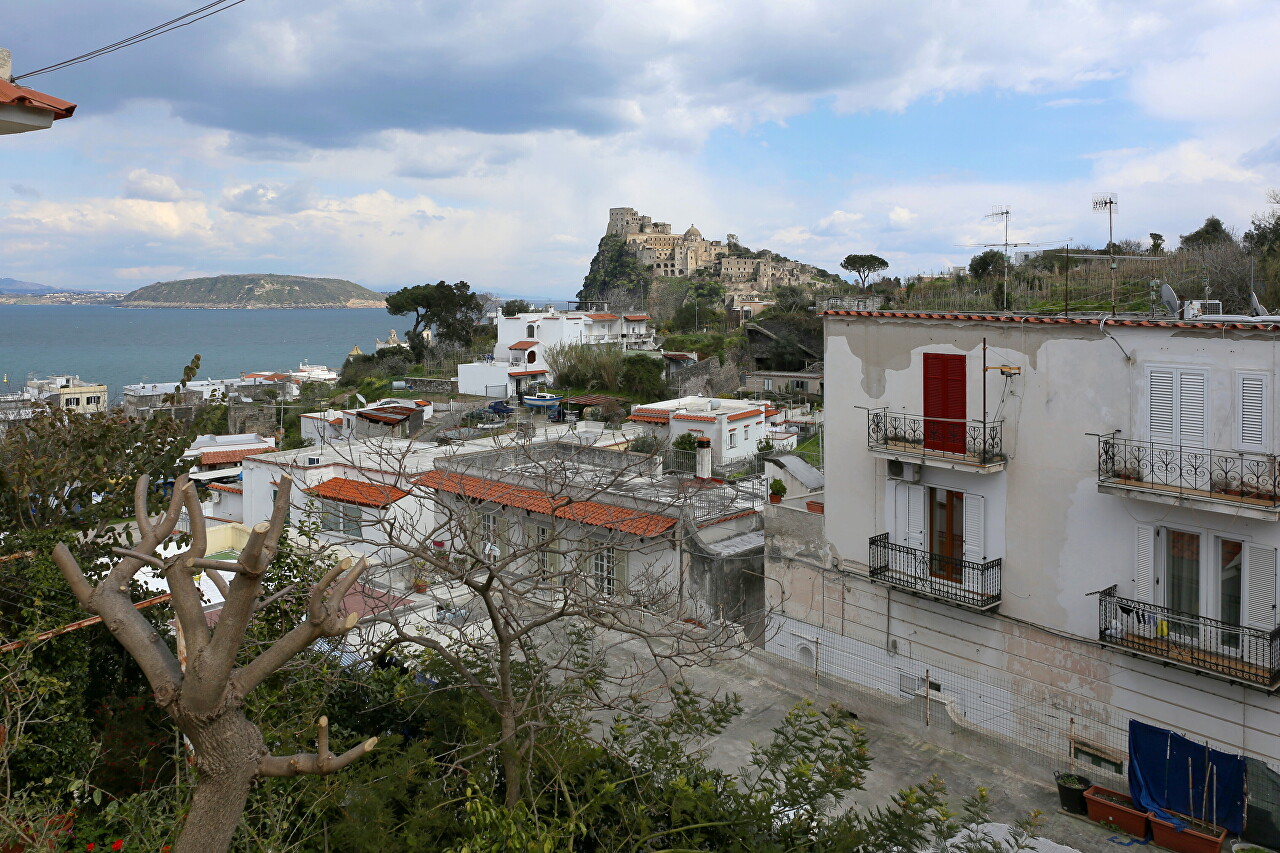
According to the map, the Cimitero Vecchio area, which translates as "old cemetery", is located below.
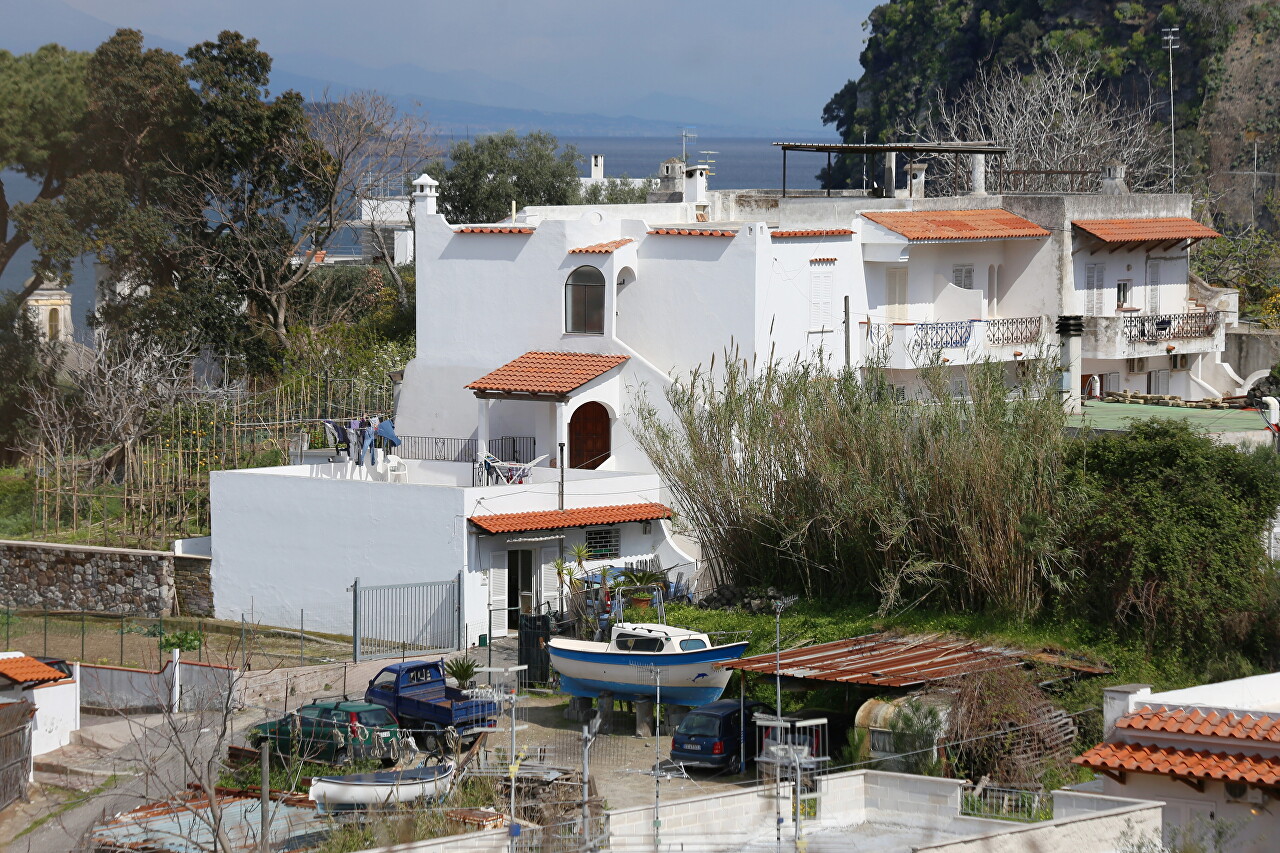
After walking two dozen meters, I was fascinated by the wonderful view of the Aragonese Castle. From this point, the entire upper part of it is perfectly visible, where up to two thousand people lived at the beginning of the 18th century.

The upper part of the castle is now occupied by the exclusive Albergo Il Monasterio, located in the former monastic cells. Clarissinok Monastery, founded in the 16th century, flourished in the 18th century, but in the 20th century its number greatly decreased, and part of the premises was rented out as a hotel.
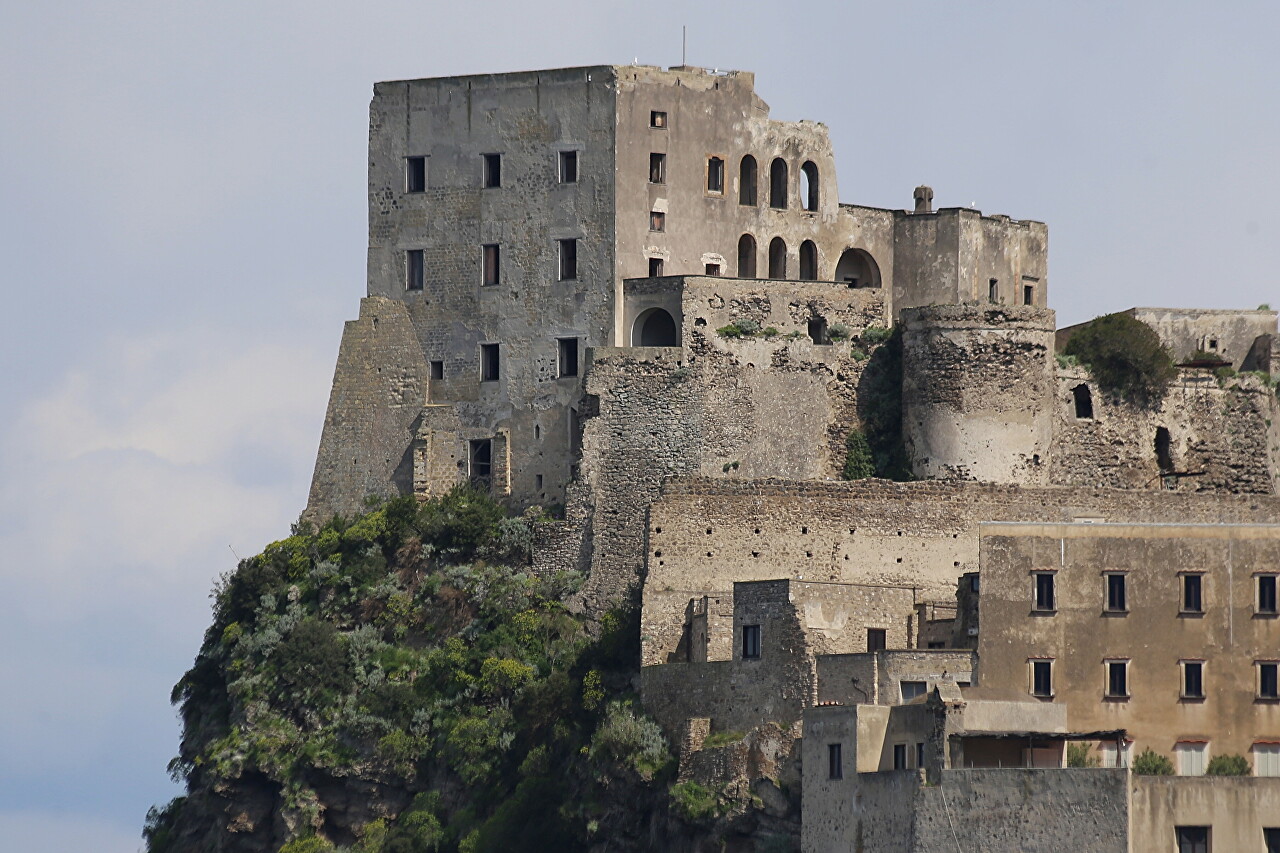
The active part of the monastery is located to the right, it is crowned by the dome of the Church of the Immaculate Conception (Chiesa dell'Immacolata). A branch of the European Institute of Archaeology is located in the church and adjacent building.
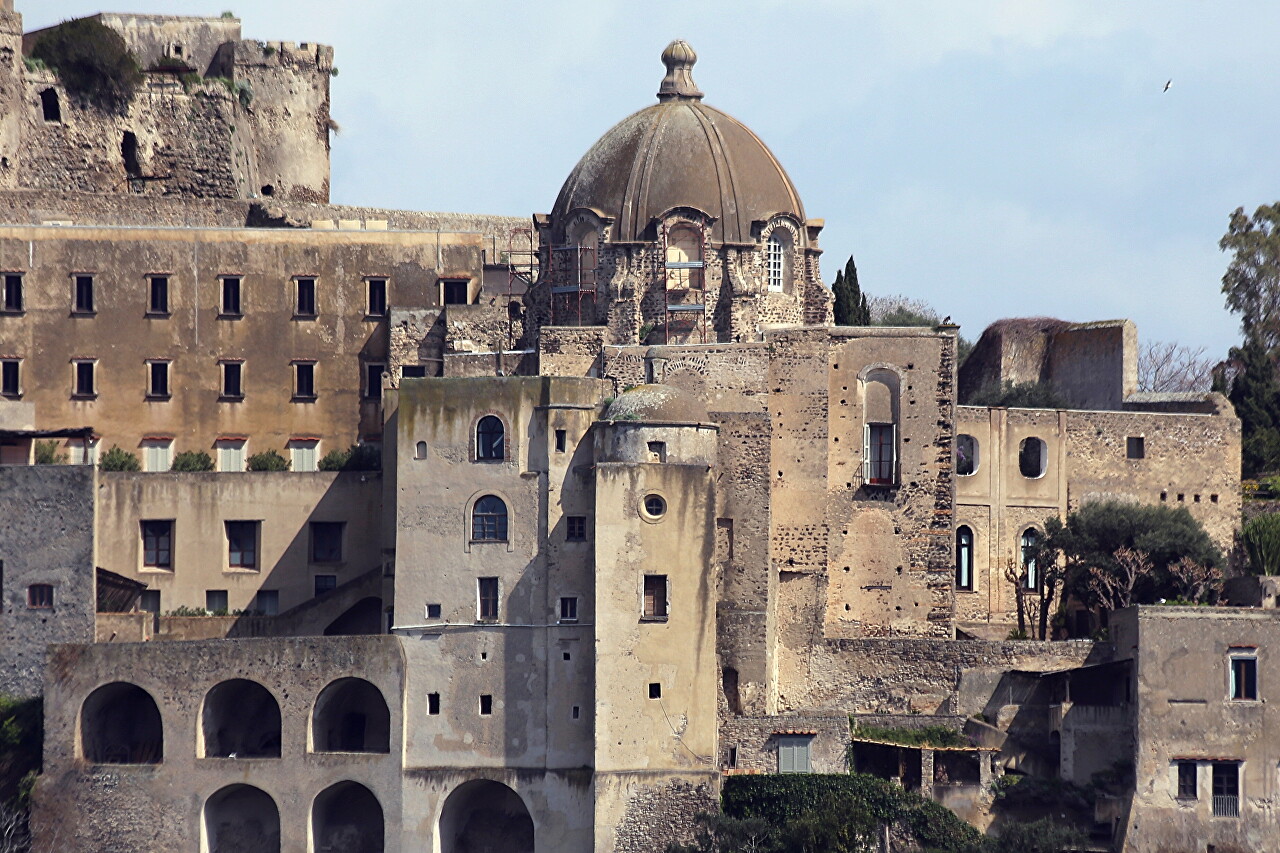
Still to the right, you can see the ruins of the Cathedral of the Assumption (Cattedrale dell'Assunta), destroyed in 1809 during the shelling of the fortress by a British squadron.
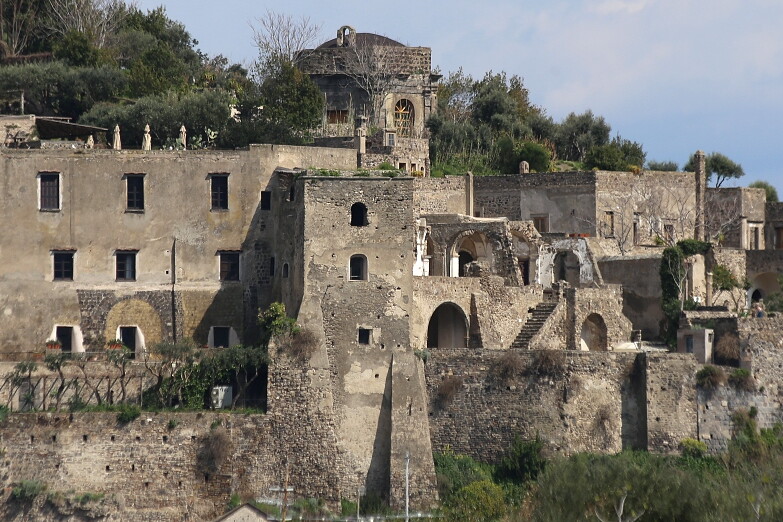
The special charm of this place is given by the rose bushes blooming along the fence.
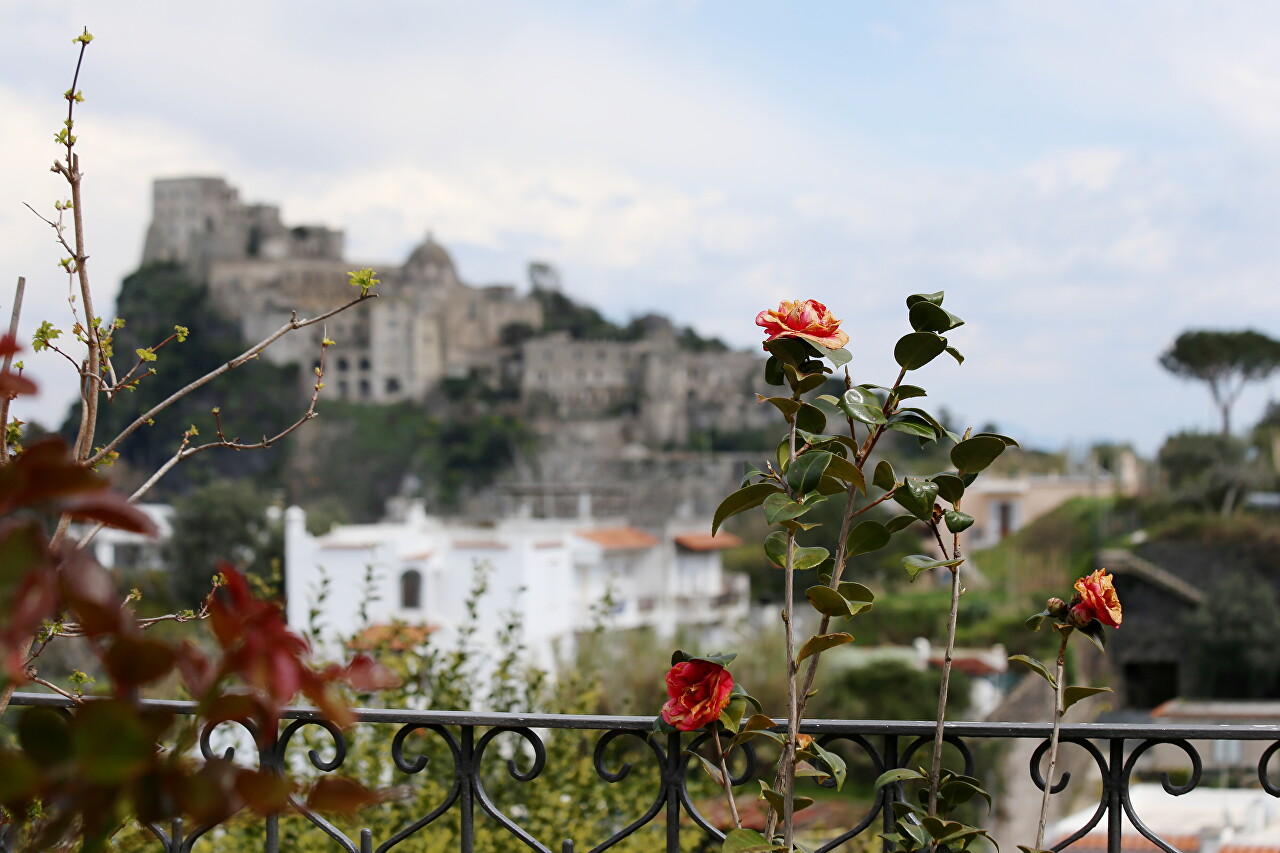
To be honest, I don't know a better place to see the top of the castle so clearly.
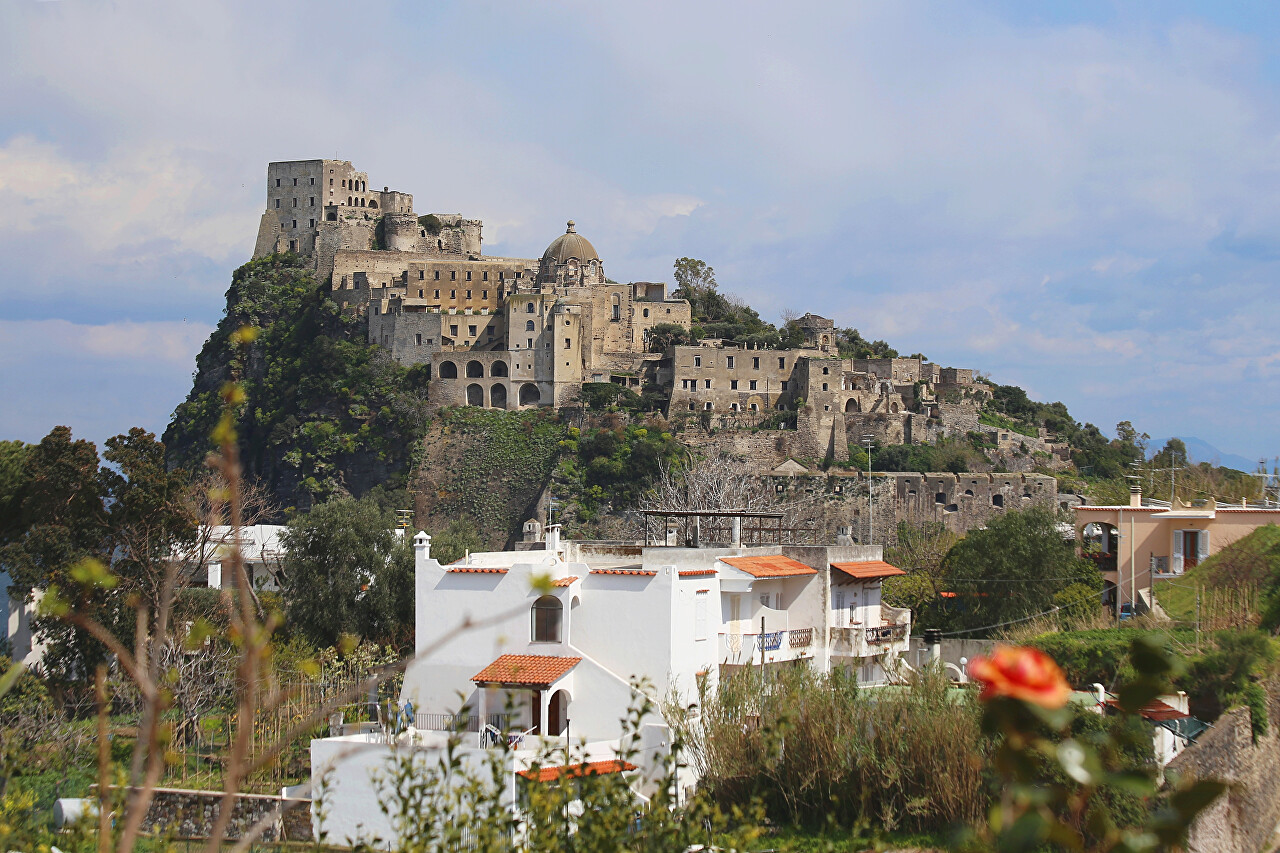
The street with a wonderful view turned out to be very short and opened onto the wide Via Nuova Cartaromana, leading to one of the famous beaches. Sidewalks on this street are completely absent - they are replaced by a narrow strip of asphalt separated from the roadway by markings. However, then I was able to see that this is a common thing on the island. Most of the roads are old trails laid out in the days when donkeys were used as transport, but now the terrain or buildings do not allow to expand these roads.
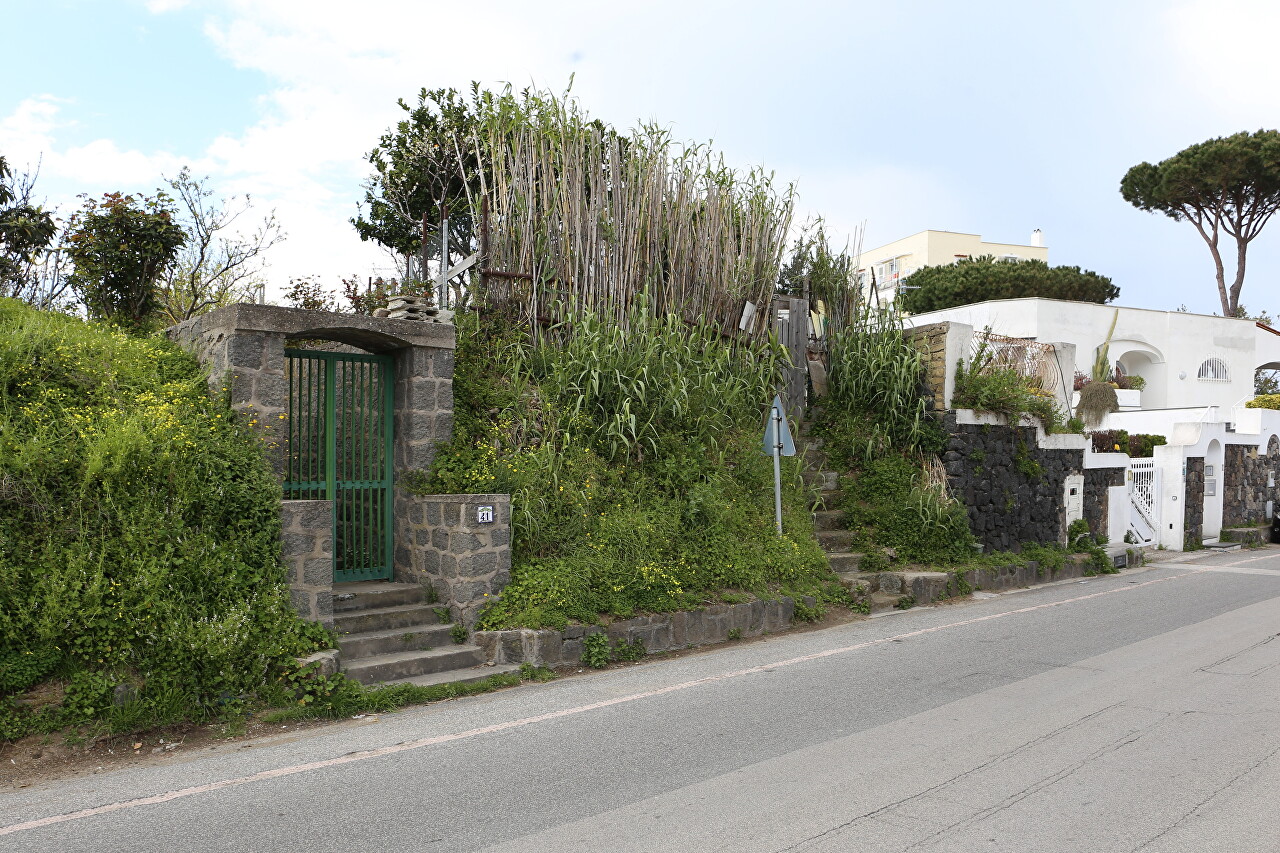
After walking a hundred meters, I again found Via Gian Battista Vico, and after another block I found a small church named Maria del Carmine. The church was closed, and I managed to look in the next day. In the meantime, I followed along.
